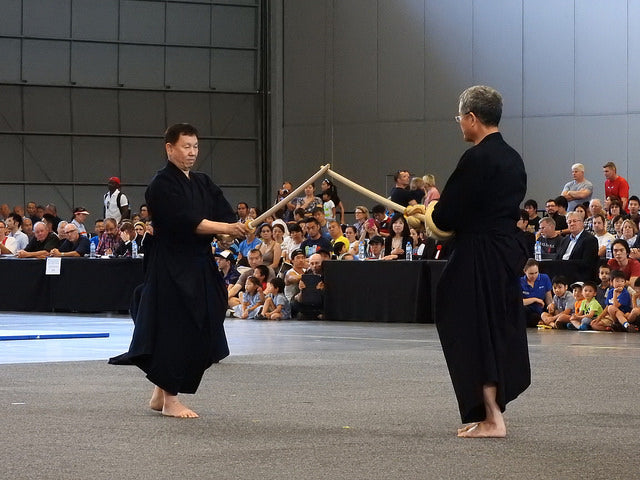Your Cart is Empty


Kenjutsu is a traditional Japanese martial art that's become increasingly popular in recent years. It encompasses all styles of swordsmanship, focusing especially on those prior to the Meiji Restoration period (1868). Kenjutsu still has modern styles, including kendo and iaido. However, most Kenjutsu styles are older, originating before the Meiji Restoration period.
Most forms of kenjutsu involve the use of either one or two swords. In a typical match, two practitioners compete to strike each other -- and defend against the other's attacks -- using either one or two practice swords. These swords are typically made of bamboo or wood to reduce the risk of injury.
One-Sword Kenjutsu
Ittō-ryū is a style of kenjutsu that involves the use of a single sword. Each practitioner is given a katana-style practice sword (bokuto or bokken), which they use to attack and defend. The specific guidelines for a match vary depending on the specific school. Normally, though, practitioners earn points for successfully landing a strike in one of their opponent's approved zones. The practitioner with the most points at the end of the match wins.
Two-Sword Kenjutsu
Nitōjutsu is a style of kenjutsu that involves the use of two swords. If follows a similar approach as Ittō-ryū but with one major difference: Practitioners are given two swords. This makes sense considering the fact that samurai warriors during Japan's feudal period carried two swords. Each samurai warrior could carry a long sword, such as a katana, and a short sword, such as a tanto. If a samurai warrior was backed into a corner and unable to quickly draw his katana, he could use the tanto to defend himself against attacks.
Two-sword kenjutsu follows in this pattern by equipping two practitioners with a katana-like practice sword and a tanto-like practice sword. Practitioners are free to change between these two practice swords as they see fit.
In Conclusion
Aside from the nuances described here, one-sword and two-sword kenjutsu are pretty much the same. They are both dictated by the schools that teach them and usually involves sparring between two practitioners.
Both one-sword and two-sword kenjutsu have been expanding, both in Japan as well as other countries. Around the turn of the 21st century, many people had a newfound interest in traditional Japanese martial arts. And being that kenjutsu involves swordsmanship, it's become a popular choice.
Photo credit: Dushan Hanuska